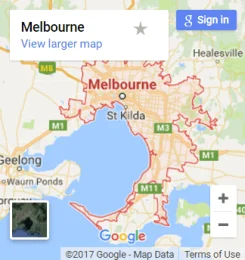Floating floorboards have revolutionised the flooring world, offering convenience, versatility, and aesthetics. However, when it comes to maintenance and refurbishment, questions arise. One of the most common inquiries is whether floating floorboard sanding Melbourne is feasible.
In this comprehensive guide, we delve into the intricacies of the topic ‘Can you sand floating floorboards’ to provide clarity and insights for homeowners and DIY enthusiasts alike.
Understanding Floating Floorboards
Before delving into the sanding dilemma, it’s essential to grasp the fundamentals of floating floorboards. Unlike traditional hardwood floors, which are nailed or glued down, floating floorboards are installed over an underlayment without being attached to the subfloor.
This unique installation method allows for flexibility and easier replacement but raises concerns regarding sanding.
The Sanding Conundrum:
Sanding is a common practice for rejuvenating wooden floors removing scratches, stains, and imperfections to restore their original beauty.
However, with floating floorboards, the situation is nuanced. Due to their construction, sanding presents challenges and risks that demand careful consideration.
Risk of Damage:
The primary concern with sanding floating floorboards is the risk of irreparable damage. Unlike solid hardwood floors with a thick wear layer, floating floorboards often feature a thin hardwood veneer.
Sanding can easily penetrate this veneer, exposing the underlying core material, such as plywood or engineered wood, and compromising the integrity of the floorboard.
Voiding Warranties:
Many manufacturers explicitly state that sanding voids the warranty of floating floorboards. This stipulation is not arbitrary but stems from the inherent risks associated with sanding.
Attempting to sand a floating floor may result in irreversible damage, leaving homeowners accountable for repair or replacement costs.
Alternative Restoration Methods:
While sanding may not be a viable option for floating floorboards, alternative restoration methods exist to address minor imperfections and signs of wear:
- Surface Refinishing: Surface refinishing involves cleaning the floor thoroughly and applying a fresh finish coat to revitalise its appearance. This method suits superficial scratches and dullness but may not address more profound damage.
- Spot Repair: Spot repair entails addressing specific areas of damage, such as scratches or stains, without sanding the entire floor. This targeted approach is less invasive and can effectively restore the aesthetic appeal of floating floorboards.
- Professional Consultation: Consulting with floating floorboard sanding Melbourne professionals can provide invaluable guidance on the best course of action for restoring floating floorboards. They can assess the condition of the floor, recommend suitable treatments, and execute the restoration process with precision.
Preventative Maintenance:
Prevention is often the best strategy for preserving the beauty and longevity of floating floorboards.
Implementing routine maintenance practices, such as using furniture pads, placing rugs in high-traffic areas, and promptly addressing spills, can mitigate wear and tear, reducing the need for extensive restoration efforts.
Conclusion:
The consensus leans toward caution in debating whether floating floorboards can be sanded. While sanding may seem like a quick fix for addressing wear and tear, it poses significant risks that can compromise the floor’s integrity.
Instead, homeowners are advised to explore alternative restoration methods and prioritise preventative maintenance to preserve the beauty and functionality of their floating floorboards for years to come.
For expert guidance and professional floor care services, choose Total Floor Sanding and Polishing to deliver exceptional results and preserve the integrity of your flooring investment.


